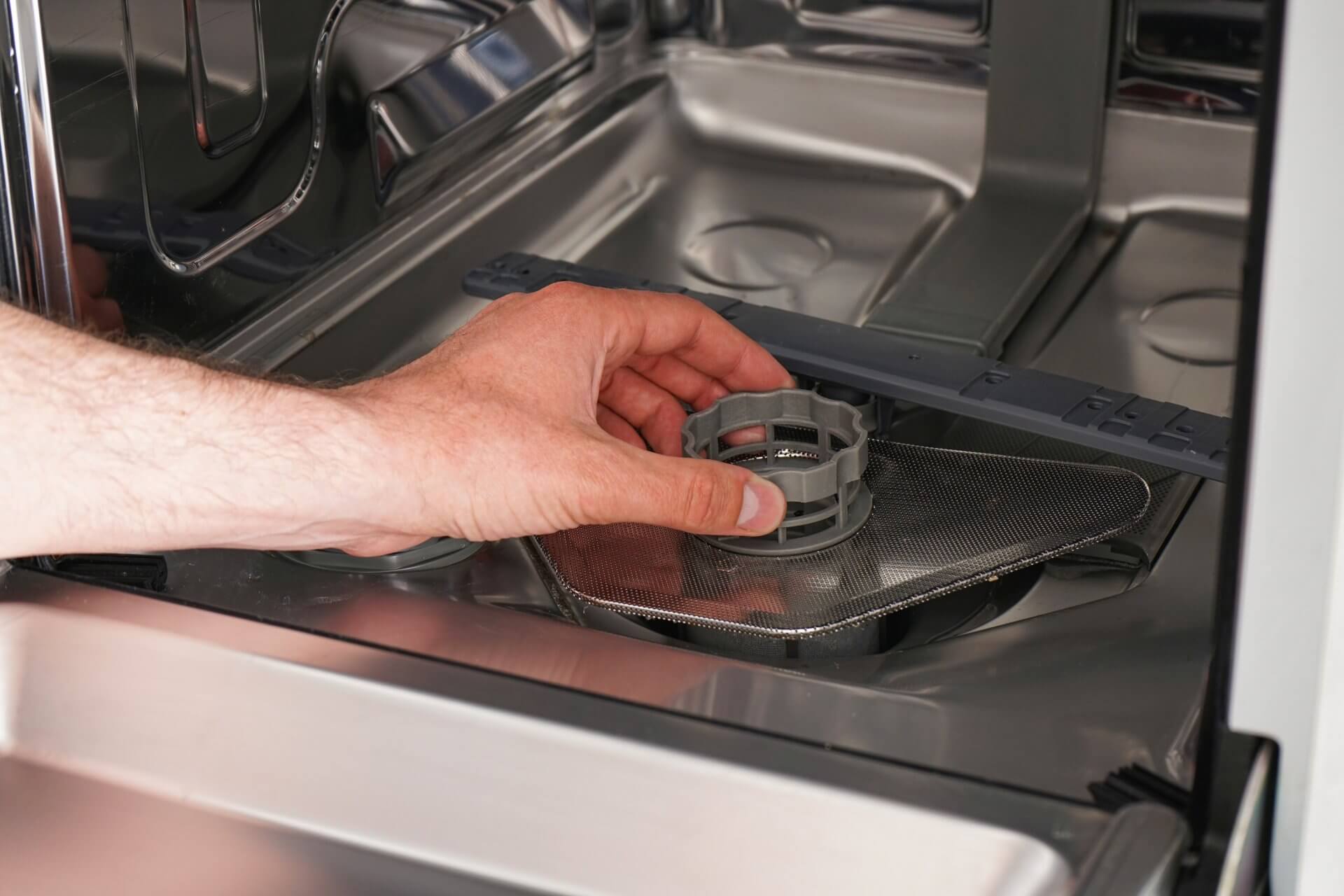White Film on Dishes from Dishwasher? 6 Proven Fixes | Australian Guide
There's nothing more disappointing than opening your dishwasher expecting sparkling clean dishes, only to find everything covered in a cloudy white film! Those glasses that should be crystal clear are now foggy, your plates look dull, and your cutlery has lost its shine. This frustrating problem isn't just about aesthetics – that white residue can affect the taste of your food and drinks, too!
After helping hundreds of homeowners tackle this exact issue, I can tell you that approximately 85% of white film problems can be solved with simple DIY fixes. This guide will walk you through the most common causes of white film on dishes and show you exactly how to restore your dishware to spotless condition without expensive repairs or replacements.

What Causes White Film on Dishes?
Before diving into solutions, it helps to understand what's causing those stubborn white deposits. When your dishwasher leaves a white film, it's typically due to one of these issues:
- Hard water minerals — The #1 cause, responsible for about 70% of white film complaints in Australia
- Detergent residue or improper dosing
- Rinse aid deficiency
- Incorrect water temperature
- Clogged spray arms or filters
- Detergent and hard water interaction
The good news? Almost all of these causes can be addressed with basic maintenance and a few simple adjustments to your dishwashing routine.
6 Effective Fixes for White Film on Dishes
1. Address Hard Water Issues
Possible Signs:
- White, chalky residue on dishes, especially glasses
- Scale buildup inside the dishwasher
- Reduced effectiveness of detergent
- Film that feels rough to the touch
- Problem worse in Australian hard water areas (Perth, Adelaide, Brisbane's western suburbs)
Hard water contains high levels of dissolved minerals – primarily calcium and magnesium – that leave deposits when water evaporates. These minerals are the most common cause of white film, affecting approximately 70% of Australian households to some degree.
DIY Fix:
- Use a dishwasher cleaner with citric acid:
- Run an empty hot cycle with a commercial dishwasher cleaner
- Many products like Finish Dishwasher Cleaner are designed specifically for hard water issues
- Repeat monthly for preventative maintenance
- Try white vinegar rinses:
- Place a cup of white vinegar upright on the top rack
- Run a hot water cycle without detergent
- The vinegar helps dissolve mineral deposits
- For existing film on glassware:
- Soak affected items in a solution of equal parts white vinegar and warm water
- Gently scrub with a soft cloth if needed
- Rinse thoroughly and dry
- Consider a water softener:
- Whole-house systems are the most effective long-term solution
- Cost ranges from $1,000-3,000 installed in Australia
- Essential for Perth and Adelaide homes with extreme hard water
Australian Water Hardness: Contact your local water authority for hardness levels. Perth water averages 120-180mg/L, Adelaide 100-250mg/L, and Brisbane 50-100mg/L. Test strips from Bunnings can confirm your specific levels. Readings above 120mg/L require special treatment.
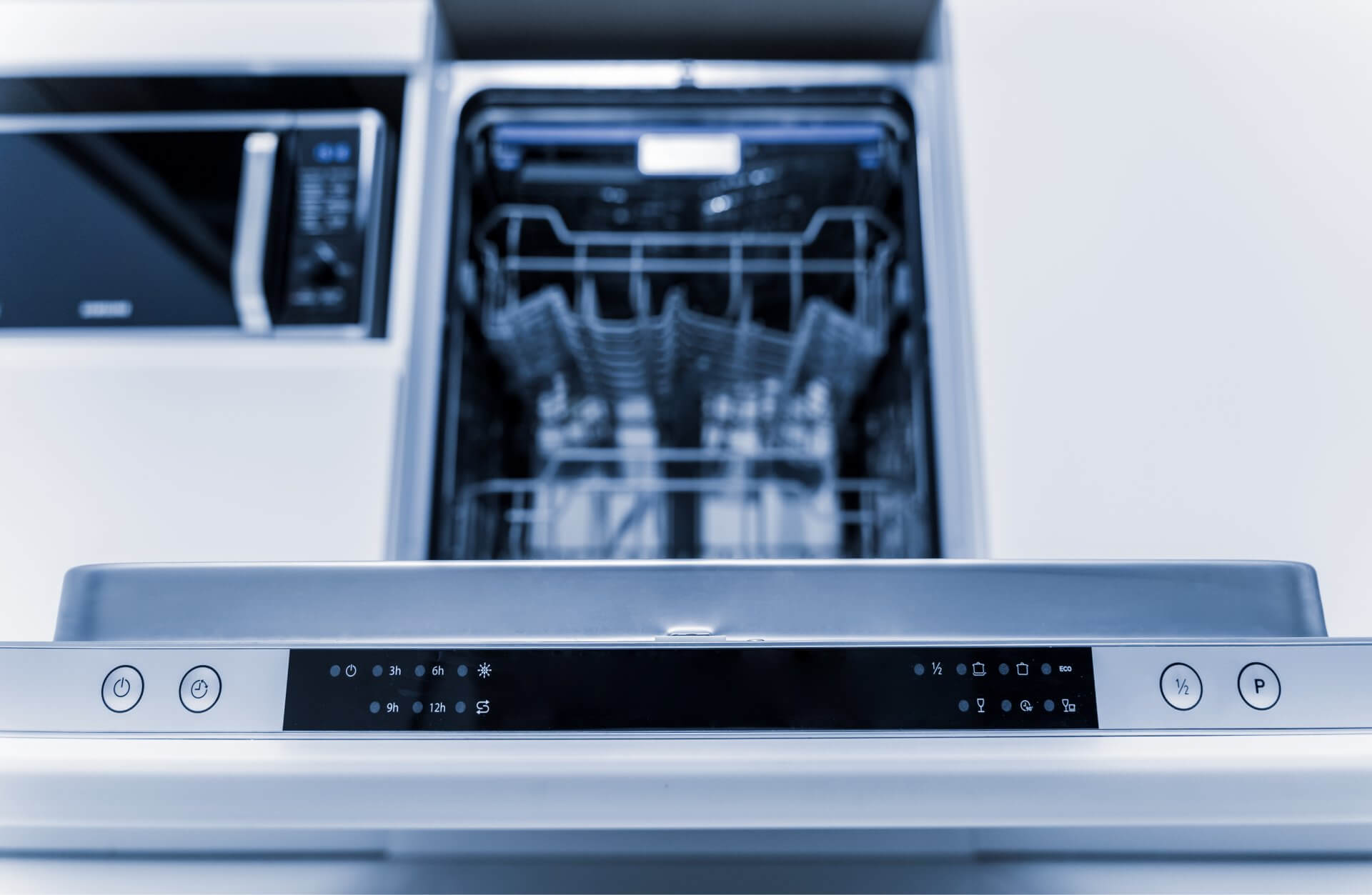
2. Adjust Your Detergent Usage
Possible Signs:
- White powdery residue rather than a hard film
- Problem began after switching detergent brands
- Film that feels slippery rather than rough
- Suds or foam visible inside the dishwasher after a cycle
Using too much detergent or the wrong type for your water conditions can leave a residue, while using too little may not effectively clean dishes, allowing mineral deposits to form.
DIY Fix:
- Match detergent to your water type:
- For hard water: Use detergents with water softening agents or add a booster
- For soft water: Use less detergent than recommended
- Try different formulations:
- Switch between powder, gel, and tablet formulations to see which works best
- Powder often works better in very hard water areas
- Tablets and pods may leave more residue in certain conditions
- Adjust dosage:
- Experiment with using 25% less detergent than recommended
- For tablet users, consider breaking tablets in half for medium loads
- Avoid overloading the detergent dispenser:
- Fill only to the indicated lines
- Excess detergent can't be properly rinsed away
Detergent Tip: Powder detergents often contain more phosphates or other water softening agents than gels, making them better for hard water areas. However, many Australian states have restrictions on phosphate levels in detergents for environmental reasons, so look for environmentally friendly alternatives with citric acid instead.
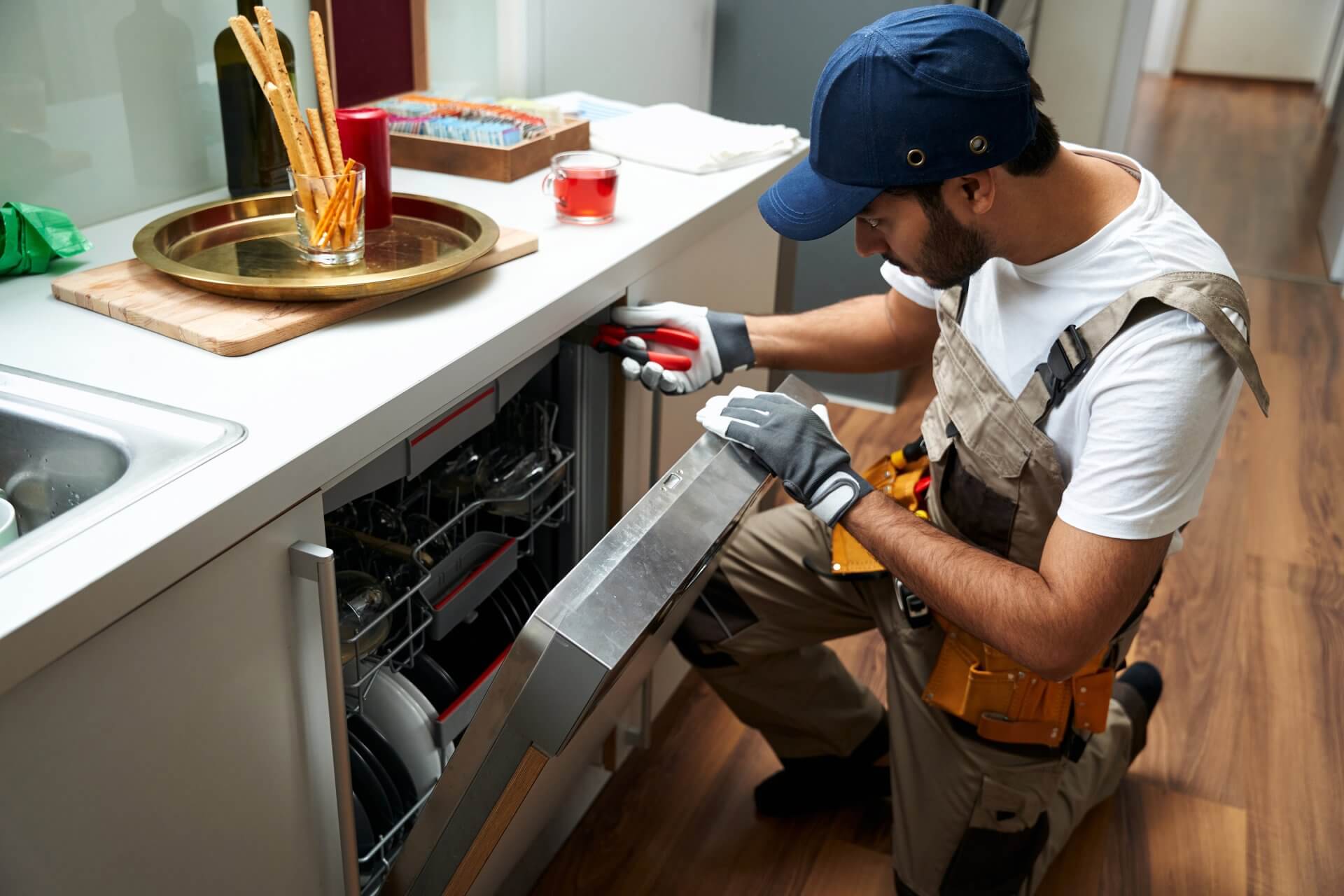
3. Use Rinse Aid Consistently
Possible Signs:
- Water droplets that dry as spots on glasses
- Film appears worse on upper rack items
- Streaking in addition to white film
- Problem is worse during humid weather
Rinse aid is not just an optional extra – it's crucial for proper drying and preventing mineral deposits, especially in hard water areas. It reduces water surface tension, causing water to sheet off dishes rather than forming droplets that evaporate and leave minerals behind.
DIY Fix:
- Fill the rinse aid dispenser:
- Locate the rinse aid compartment (usually in the door near the detergent dispenser)
- Fill to the indicated level
- Close tightly and wipe away any spills
- Adjust the rinse aid setting:
- Most dishwashers have an adjustable dispenser (typically numbered 1-4 or 1-6)
- For hard water areas, use a higher setting
- For soft water, a lower setting is sufficient
- Check regularly and refill:
- Most dispensers have an indicator window
- Refill when the indicator shows low levels
- Set a reminder to check monthly
- Try different brands:
- Some rinse aids are formulated specifically for hard water
- Eco-friendly options are available if you're concerned about chemicals
Environmental Note: While traditional rinse aids are effective, there are now several environmentally friendly options on the Australian market that use plant-based ingredients rather than petrochemicals, if you prefer a greener option.
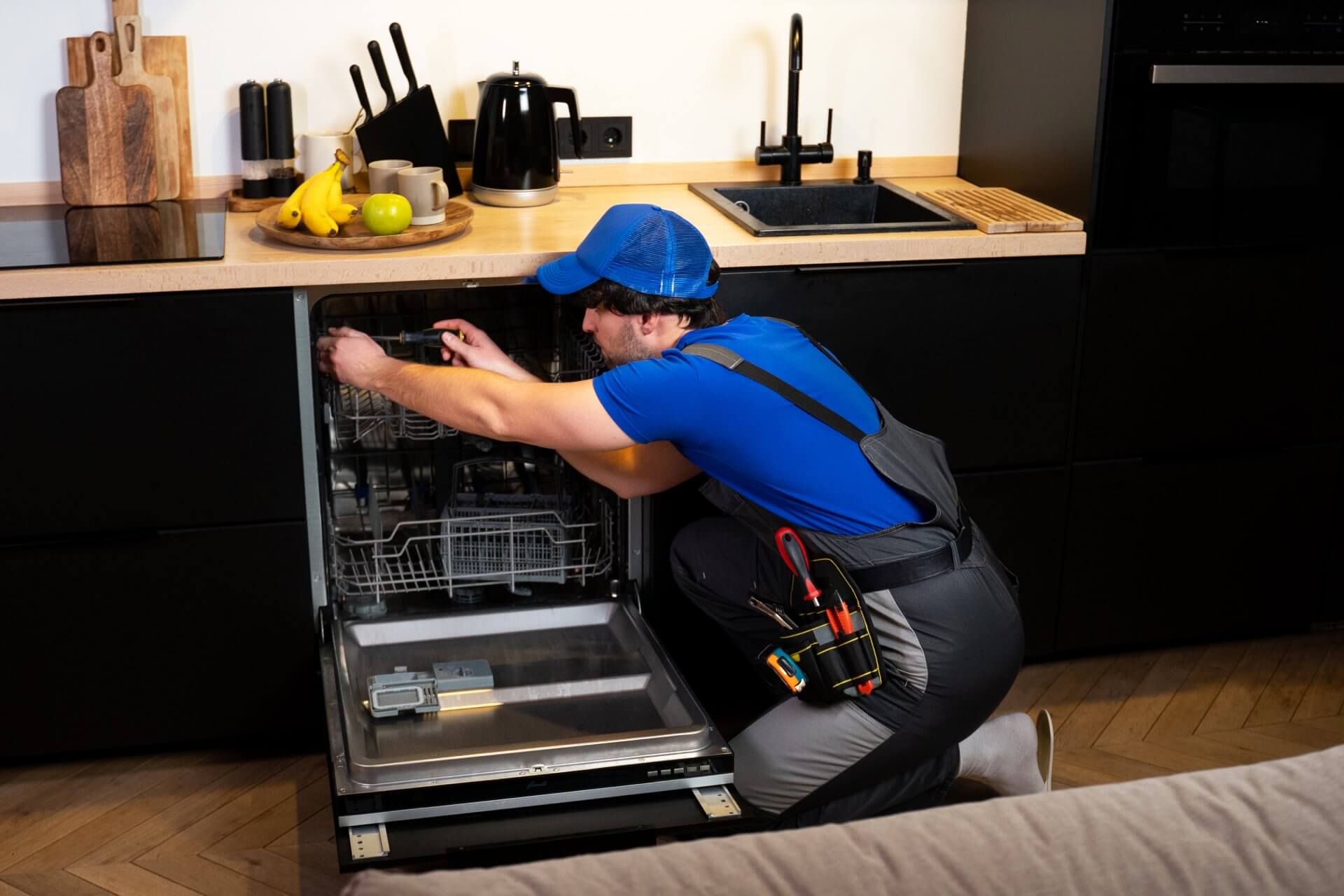
4. Check Water Temperature (Critical for Australian Standards)
Possible Signs:
- White film appears worse in winter months
- Detergent not fully dissolving
- Grease or food particles along with white film
- Poor cleaning results overall
Most dishwasher detergents require hot water (at least 50°C) to dissolve and work effectively. Insufficient water temperature can lead to both cleaning issues and detergent residue.
DIY Fix:
- Check your hot water system temperature:
- Australian hot water systems must be set to 60°C at the unit per AS/NZS 3500 standards
- This prevents Legionella growth while ensuring adequate dishwasher temperature
- Run hot water at the sink before starting:
- Run the kitchen tap until the water is hot
- This ensures the first fill in your dishwasher is already hot
- Use the "Heavy" or "Pots & Pans" cycle:
- These cycles typically use higher temperatures
- The extra heat helps dissolve detergent properly
- Check the dishwasher's heating element:
- If your machine has a heat boost option, ensure it's activated
- For persistent problems, you may need to check if the heating element is functioning
Safety Note: According to Australian plumbing standards AS/NZS 3500, water at the tap should be limited to 50°C to prevent scalding risks, while the system itself can be set higher. Some newer dishwashers heat water internally regardless of incoming temperature.

5. Clean Spray Arms and Filters
Possible Signs:
- Uneven cleaning results
- White film worse on items in certain locations
- Dishwasher making unusual noises during cycles
- Visible debris in the filter area
Clogged spray arms or filters prevent proper water circulation and rinsing, leading to detergent and mineral residue on your dishes.
DIY Fix:
- Clean the dishwasher filter:
- Locate the filter assembly (usually at the bottom of the tub)
- Remove and disassemble according to manufacturer instructions
- Rinse under warm water to remove debris
- Scrub gently with an old toothbrush if needed
- Replace securely
- Check and clean spray arms:
- Remove spray arms (usually they twist off or are held by a central screw)
- Clear any blockages in the small holes using a toothpick or thin wire
- Check for free movement and proper rotation
- Rinse thoroughly before reinstalling
- Deep clean the entire dishwasher:
- Run an empty cycle with a commercial dishwasher cleaner
- Pay special attention to door seals and corners where residue accumulates
- Wipe down the interior surfaces with a cloth dampened with white vinegar
- Check the drain system:
- Ensure the drain hose isn't kinked
- Check that the air gap (if your installation has one) is clear
- Verify the drain is flowing freely
Maintenance Tip: Clean your dishwasher filter every 1-2 weeks for optimal performance. Many Australians don't realise their dishwasher has a removable filter that requires regular cleaning.

6. Try Dishwasher Additives and Boosters
Possible Signs:
- Standard cleaning methods haven't worked
- You live in an area with extremely hard water
- White film problem is severe and persistent
- Multiple appliances show similar mineral buildup issues
For particularly stubborn white film problems, especially in areas with very hard water, targeted additives can help break down mineral deposits and prevent new buildup.
DIY Fix:
- Use a water softener additive:
- Products like Finish Water Softener Salt are designed for dishwashers
- Follow package directions for your specific machine
- These are especially helpful in extremely hard water areas
- Try citric acid treatments:
- Add 2-3 tablespoons of citric acid powder to the detergent dispenser
- Run an empty cycle on high heat
- This is particularly effective for removing existing buildup
- Consider glass-specific treatments:
- Products like Finish Glass Protector are formulated to prevent etching and cloudiness
- Add to regular wash cycles according to package directions
- Make a DIY booster:
- Add 1/4 cup of borax to the bottom of the dishwasher before running
- This helps soften water during the wash cycle
- Alternately, place 2 tablespoons of citric acid in a small dish on the top rack
Australia-Specific Tip: While many international guides recommend using washing soda (sodium carbonate) as a dishwasher booster, be aware that in Australian conditions with already high mineral content, this can sometimes worsen residue problems rather than improve them.

Prevention: Stop White Film Before It Starts
The best way to deal with white film is to prevent it from forming in the first place:
- Use rinse aid in every load — This single habit prevents 50% of film problems
- Clean your dishwasher monthly — Prevents mineral buildup in the machine itself
- Adjust your routine for your water hardness — Different regions of Australia require different approaches
- Pre-rinse dishes if water is particularly hard — Removes some minerals before the main wash
- Consider installing a water softener if problems persist — Solves issues throughout your home
When to Call a Professional
While these DIY fixes resolve the vast majority of white film issues, there are times when professional help is warranted:
- You've tried all the above solutions without success
- Your dishes are showing signs of etching (permanent damage to glass)
- Your dishwasher has other performance issues alongside the white film
- You suspect a problem with your home's plumbing affecting water quality
Conclusion
A white film on your dishes is certainly frustrating, but as you can see, fixing the problem is often much simpler than you might expect. In my experience, about 85% of white film issues can be solved with the first three fixes alone - addressing hard water, adjusting detergent, and using rinse aid properly.
Taking care of these simple adjustments and maintenance tasks regularly can keep your dishes sparkling clean and protect your dishwasher from the damaging effects of mineral buildup. Your dishwasher is designed to last 10-15 years with proper care - don't let preventable issues like white film force you into premature repairs or replacement!

Frequently Asked Questions (FAQs)
Is white film on dishes harmful to health? While unappealing, the white film is typically just mineral deposits and not harmful to health. However, if dishes feel slippery or have a chemical smell, you might have detergent residue, which should be rinsed off before using.
Can white film damage my dishes permanently? Eventually, yes. Prolonged exposure to hard water minerals can cause etching in glassware — a permanent cloudy appearance that cannot be removed. This is why addressing white film promptly is important.
Why did my dishes suddenly develop white film when I haven't changed anything? The most common reason is a change in your local water supply's mineral content, which can happen seasonally or due to municipal water treatment changes. In Australia, drought conditions can also concentrate minerals in the water supply.
What's the difference between white film and water spots? Water spots are individual circular marks left where droplets have dried, while white film is a uniform cloudy layer covering the entire surface. Water spots are easier to address, typically requiring just rinse aid.
Is vinegar safe to use in my dishwasher? Yes, but with caution. While placing a cup of vinegar on the top rack occasionally is fine, don't add vinegar to the detergent dispenser or use it in every cycle, as the acidity could eventually damage rubber seals and components, particularly in older machines.
How much does it cost to install a water softener in Australia? Basic under-sink water softeners start at $400-700, while whole-house systems typically cost $1,000-3,000 installed in major cities. Perth and Adelaide residents often find these essential. Budget $100-200 annually for salt. Check if your system qualifies for water efficiency rebates in your state.

About Julian
Home appliance enthusiast and DIY repair specialist with a passion for helping others save money on appliance maintenance.
Related Articles
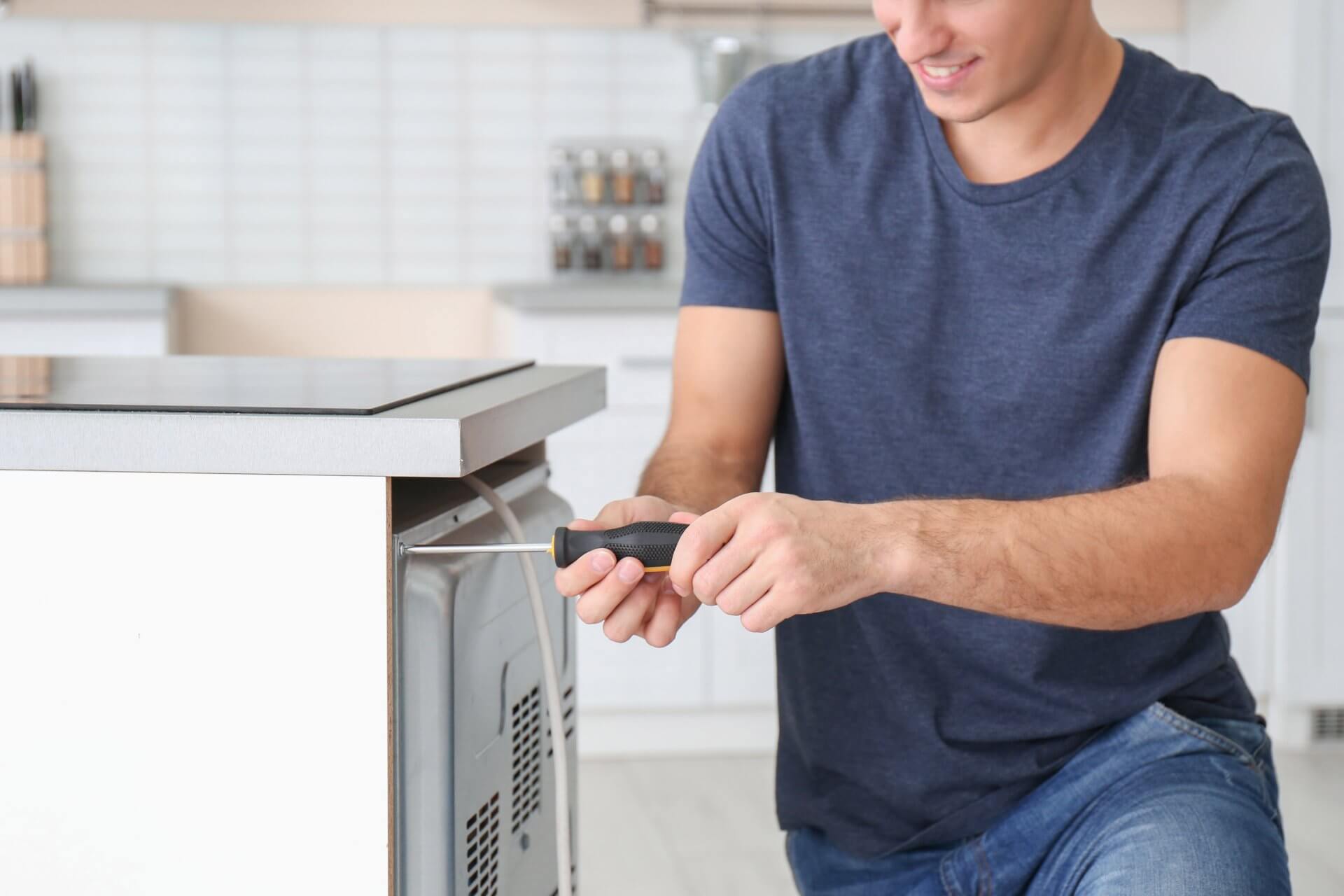
Dishwasher Not Cleaning Properly? 7 Expert Solutions That Work

Dishwasher Not Draining? 5 Simple DIY Fixes That Actually Work
